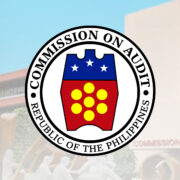Unlock hidden profits: The stretch goals your business needs
My team and I have led more corporate strategic planning sessions for clients around the world that I can remember. I have also written about corporate strategic planning extensively, and one of the elements that always get a lot of questions are stretch goals. Here I will dive further into this topic and how it can unlock many hidden profit potentials in your business.
Why your goal-setting fails
Many companies, even those with the best intentions, fall into the trap of setting suboptimal goals that leave substantial profits on the table. The problem lies not in their ambition but in the approach to goal-setting itself. CEOs and business leaders must reassess their strategic planning and discover the transformative power of stretch goals.
Traditional goal-setting often leans on the widely accepted SMART criteria: goals must be Specific, Measurable, Achievable, Relevant and Time-bound. While this framework offers a solid foundation, it can inadvertently stifle ambition. When goals are designed to be comfortably achievable, they can lead to complacency, stunted innovation and missed opportunities. While it may feel safe in the short term, this approach can foster mediocrity and a false sense of security, making your business vulnerable to more ambitious competitors.
BS boardroom sandbagging
Consider the phenomenon of “sandbagging,” where managers intentionally set lower targets to ensure they’re met. I have seen it a thousand times. There is so much window dressing and BS going on when executives present their strategic plans to the owners or CEOs. One extreme example was a large family business conglomerate. I was sitting next to the owner/CEO when the teams presented their plans for the next year.
I was the only one who sniffed there was something wrong and asked them to put up their plans for the year before. It turned out that the goals they presented now were almost identical to the ones a year before. They just created a new powerpoint with more beautiful pictures on it. They had not reached any of their goals the year before and tried to fool the CEO.

The vague goals plague
Another common pitfall is vague or overly broad goal-setting. Goals such as “increase sales” or “improve customer service” lack the specificity and direction needed to galvanize a team. Employees often struggle to see how their individual efforts contribute to these ambiguous targets, leading to disengagement and underperformance.
I recall a meeting with a business owner/operator in Sao Paulo, Brazil, whom I asked, ”What are your goals for the next one to two years?” And he replied, “I want to grow.” That is the same as asking a child what he or she wants to be when growing up, and the child replies, “up!”
The secret sauce: Stretch goals
Stretch goals are bold, ambitious objectives that push your organization beyond its perceived limits. They aren’t about recklessness or wishful thinking; instead, they are carefully crafted challenges that encourage teams to innovate, collaborate and unlock their full potential. Stretch goals act as a catalyst for breakthroughs, forcing businesses to think creatively and approach problems in new ways.
They still have to be possible, but real stretch goals mean that you initially have no idea how to reach them. You will need to make plans that will stretch you and your team’s imagination, creativity, performance and innovation to the limit.
For example, think of Elon Musk’s ambitious targets for SpaceX or Tesla. While critics called his goals unrealistic, they drove extraordinary innovation and results that redefined industries. Stretch goals create a sense of urgency and excitement, motivating teams to go above and beyond.
The hidden costs of playing it safe
Failing to set stretch goals comes with a price: lost potential profits, missed market opportunities and stagnation. Suboptimal goals often:
• Undermine team engagement: Employees disengage when goals are too easy, as they fail to feel challenged or inspired.
• Miss growth opportunities: Businesses that aim low risk falling behind competitors who are more daring in their ambitions.
• Foster complacency: Without a culture of ambition, companies become resistant to change and innovation.
For instance, a leading consumer goods company lost market share because its leaders refused to challenge their product development teams with ambitious goals. Meanwhile, a competitor that embraced stretch goals launched an innovative line of products, capturing the market and leaving the former industry leader scrambling to catch up.
The benefits of stretch goals
The biggest secret is: if you set stretch goals, then come up with ambitious plans, execute like a king and still fall short of reaching them, you will still do better compared to what your results would have been if you had set more “reasonable” goals. Far, far better.
When done correctly, stretch goals offer significant benefits, including:
• Fostering innovation: Teams are encouraged to think outside the box to achieve objectives.
• Building resilience: Tackling ambitious goals builds confidence and adaptability in the face of challenges.
• Enhancing collaboration: Stretch goals often require cross-functional teamwork and coordination, strengthening organizational unity.
For example, in one of our consulting engagements with a family business conglomerate, a stretch goal to enter three new international markets within a year transformed the company’s growth trajectory. By aligning resources, fostering innovation and leveraging external expertise, they exceeded expectations and became a regional powerhouse.
Stretch goals also create a ripple effect throughout the organization. Leaders who model ambition and resilience inspire their teams to adopt the same mindset, fostering a culture of continuous improvement.
Success case studies
Many renowned companies owe their success to well-implemented stretch goals:
Ϫ Google: The company’s famous “Moonshot” projects, such as autonomous vehicles and renewable energy solutions, are prime examples of stretch goals driving innovation.
Ϫ Apple under Steve Jobs: The creation of the iPhone wasn’t a safe or obvious bet—it was a bold vision that redefined the mobile industry.
Ϫ Amazon: Jeff Bezos’s commitment to long-term thinking and ambitious objectives, such as Prime and AWS, turned Amazon into a market leader.
Your five to thrive
• Reassess your current goals: Are they stretch goals? Ambitious enough to inspire and challenge your team?
• Benchmark against industry leaders: Study how competitors or industry innovators have used stretch goals to their advantage.
• Invest in leadership training: Leaders need to be equipped to guide their teams through the challenges of ambitious goal-setting.
• Foster a culture of experimentation: Encourage your team to test new ideas and approaches without fear of failure.
• Use external experts: Engage consultants or mentors who can offer an unbiased perspective and help refine your stretch goals.
Tom Oliver, a “global management guru” (Bloomberg), is the chair of The Tom Oliver Group, the trusted advisor and counselor to many of the world’s most influential family businesses, medium-sized enterprises, market leaders and global conglomerates. For more information and inquiries: www.TomOliverGroup.com or email Tom.Oliver@inquirer.com.ph.


















